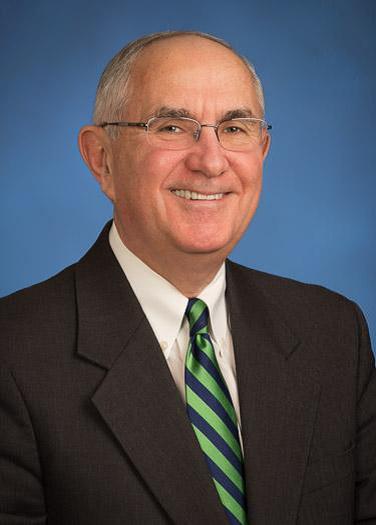
Having been associated with the mutual fund industry for over 40 years, I have had the opportunity to witness its growth and evolution. I recently decided to look back and see whether my observations were supported by statistics. I thought I might share the results of that endeavor with you, as I found them quite interesting.
I started my inquiry by going back to 1975, the year I started my journey in the industry. In 1975 there were fewer than 500 mutual funds and industry assets were around $46 billion. Back then the industry was divided between load and no-load funds, and load funds were further divided between proprietary and non-proprietary. I believe the largest fund family back then was IDS, a proprietary load organization. A lot has changed during this period with the industry now having over $21 trillion in assets in more than 10,000 funds.
I believe there have been a variety of factors that have contributed to the success of the industry. In addition to filling an investor need, funds benefited from: (a) a sound regulatory structure that protected investors while still enabling innovation; (b) favorable tax treatment; (c) the dramatic changes in the retirement arena with the swing from defined benefit plans to defined contribution plans and the development of individual retirement accounts; (d) the industry remaining largely scandal free; and (e) the development of innovative products such as money market funds and exchange-traded funds. Since 1975 industry assets have grown at a compound annual growth rate of around 15%[1].
Accompanying this growth were rather significant changes in the industry, changes that are continuing now and some might say accelerating. Let’s take a quick look at some of the trends we are witnessing.
Active v Passive: Over the past 10 years, index funds and index ETFs have doubled their market share from 18% to 36%. During that same period, actively managed funds saw a corresponding reduction in their market share as it fell from 82% to 64%. During the past five years actively managed equity funds have experienced net outflows every year, with those outflows totaling almost $1.4 trillion during that time period—more than $500 billion flowed out in 2018 alone.
Fee Compression: The asset-weighted expense ratios of funds have declined over the past 10 years for a variety of reasons. Equity fund expense ratios went from 83 basis points to 55 basis points, hybrid funds from 77 basis points to 66 basis points, and bond funds from 61 basis points to 48 basis points. Almost 80% of equity fund assets are now in the lowest-quartile expense funds.
Increased Industry Concentration: While assets in the industry almost tripled in the past 20 years, the number of fund complexes declined by 30%. During this period the market share of the top three fund firms increased from just over 25% to 42%, with the top fund firm increasing from 12.5% to 21%. As a group, the other 22 fund families in the top 25 saw their market share decline by almost 10%.
Money Market Funds: Over the past 10 years money market funds have undergone some fundamental changes. While assets have declined by 20%, the number of money market funds has declined by 50%, with prime fund assets contracting by almost 70% and government fund assets increasing by over 50%.
Exchange-Traded Funds: While ETFs have been one of the key fund innovations, that market is dominated by a few firms, with the top three representing over 75% of the assets. Over the past 10 years ETFs have grown at a rate of over 20% per year, with the first five years seeing a rate of over 25% and the last five years, 15%. The recent adoption by the SEC of the ETF rule and the approval of non-transparent ETFs should bear watching.
Slowing Growth in Assets: As mentioned earlier, since 1975 the assets in the industry have grown at a rate of 15% per annum. The last 10 years, however, tell quite a different story with that growth being just over 6%. That 6% was comprised of over 9% per annum in the first five years and just a little over 3% in the last five.
Other Changes: The mutual fund industry does not exist in a vacuum and outside forces have impacted it throughout its history. A few of those that are playing now are:
- Decline in Brokerage Firms: Since 2012 the number of brokerage firms has declined by over 15%, going from 4,289 in 2012 to 3,607 in 2018.
- Regulation Best Interest: The adoption of Regulation Best Interest and related matters by the SEC earlier this year will, in my view, impact the mutual fund industry.
- Share Class Initiative: The Enforcement Division’s Share Class Initiative and the resulting settlements have sharpened the focus of firms and the regulators on the characteristics of the funds and share classes selected by firms for their clients. I expect this to have a continuing impact on the way firms select funds and share classes for their clients.
These are a few of the observations I have regarding the mutual fund industry, where it has been, how it has changed and to a very limited extent, where it might be going. Independent fund directors should be aware of these and other trends affecting the industry. They should consider discussing these with management with particular regard for how they might affect their fund shareholders now and in the future. Independent fund directors might also want to appreciate the impact these trends may be having on the manager and its ability to continue to serve the funds and their shareholders.
Andrew J. Donohue, better known as Buddy Donohue, served as chief of staff (2015-2017) and director of the Investment Management Division (2006-2010) at the U.S. Securities and Exchange Commission.
[1] All references to growth rates in this article are to the compound annual growth rate.
